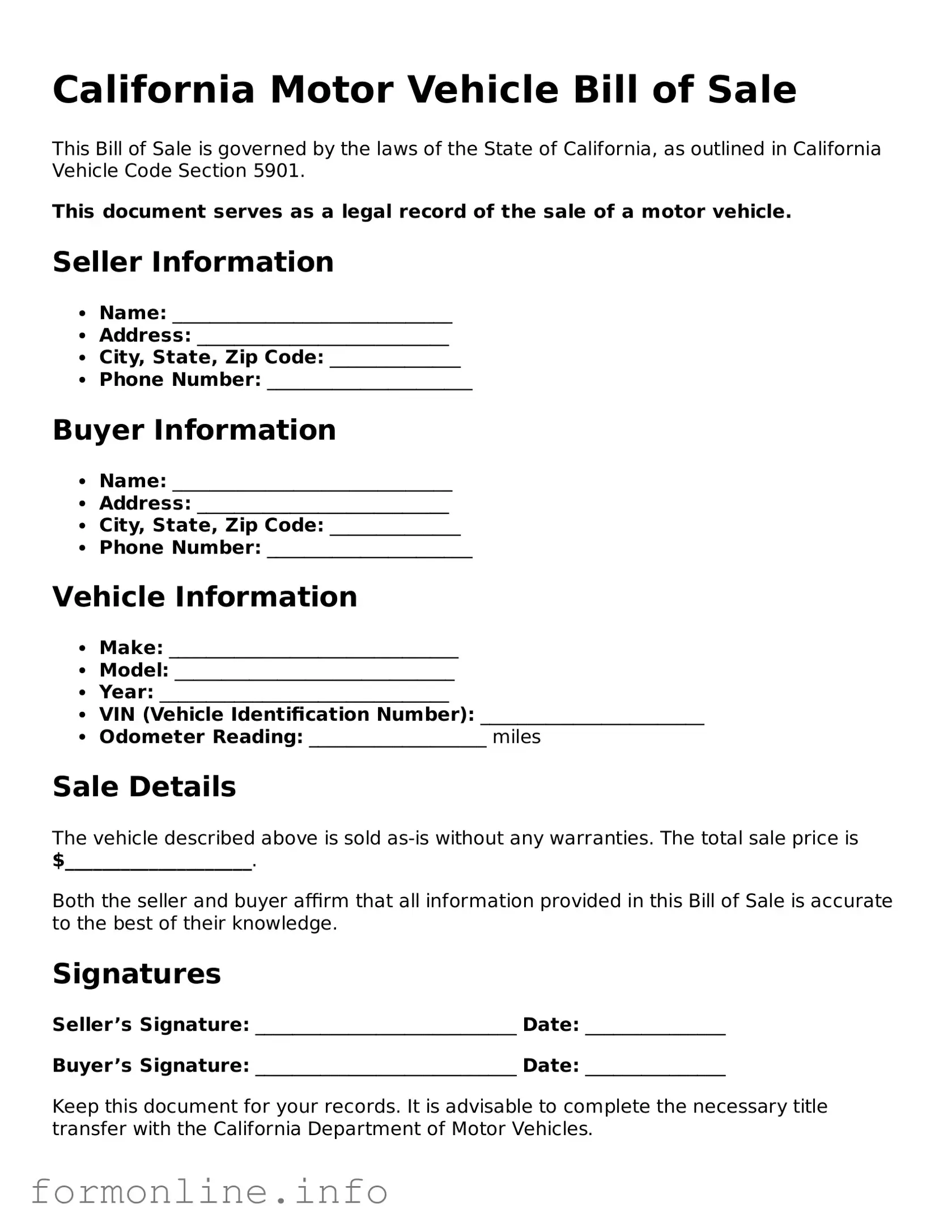California Motor Vehicle Bill of Sale
This Bill of Sale is governed by the laws of the State of California, as outlined in California Vehicle Code Section 5901.
This document serves as a legal record of the sale of a motor vehicle.
Seller Information
- Name: ______________________________
- Address: ___________________________
- City, State, Zip Code: ______________
- Phone Number: ______________________
Buyer Information
- Name: ______________________________
- Address: ___________________________
- City, State, Zip Code: ______________
- Phone Number: ______________________
Vehicle Information
- Make: _______________________________
- Model: ______________________________
- Year: _______________________________
- VIN (Vehicle Identification Number): ________________________
- Odometer Reading: ___________________ miles
Sale Details
The vehicle described above is sold as-is without any warranties. The total sale price is $____________________.
Both the seller and buyer affirm that all information provided in this Bill of Sale is accurate to the best of their knowledge.
Signatures
Seller’s Signature: ____________________________ Date: _______________
Buyer’s Signature: ____________________________ Date: _______________
Keep this document for your records. It is advisable to complete the necessary title transfer with the California Department of Motor Vehicles.
